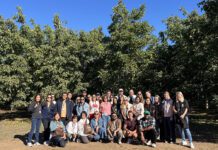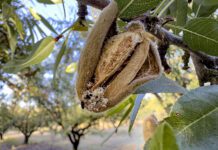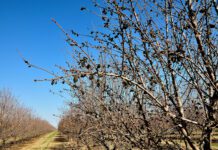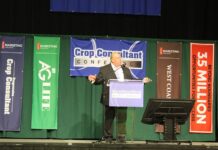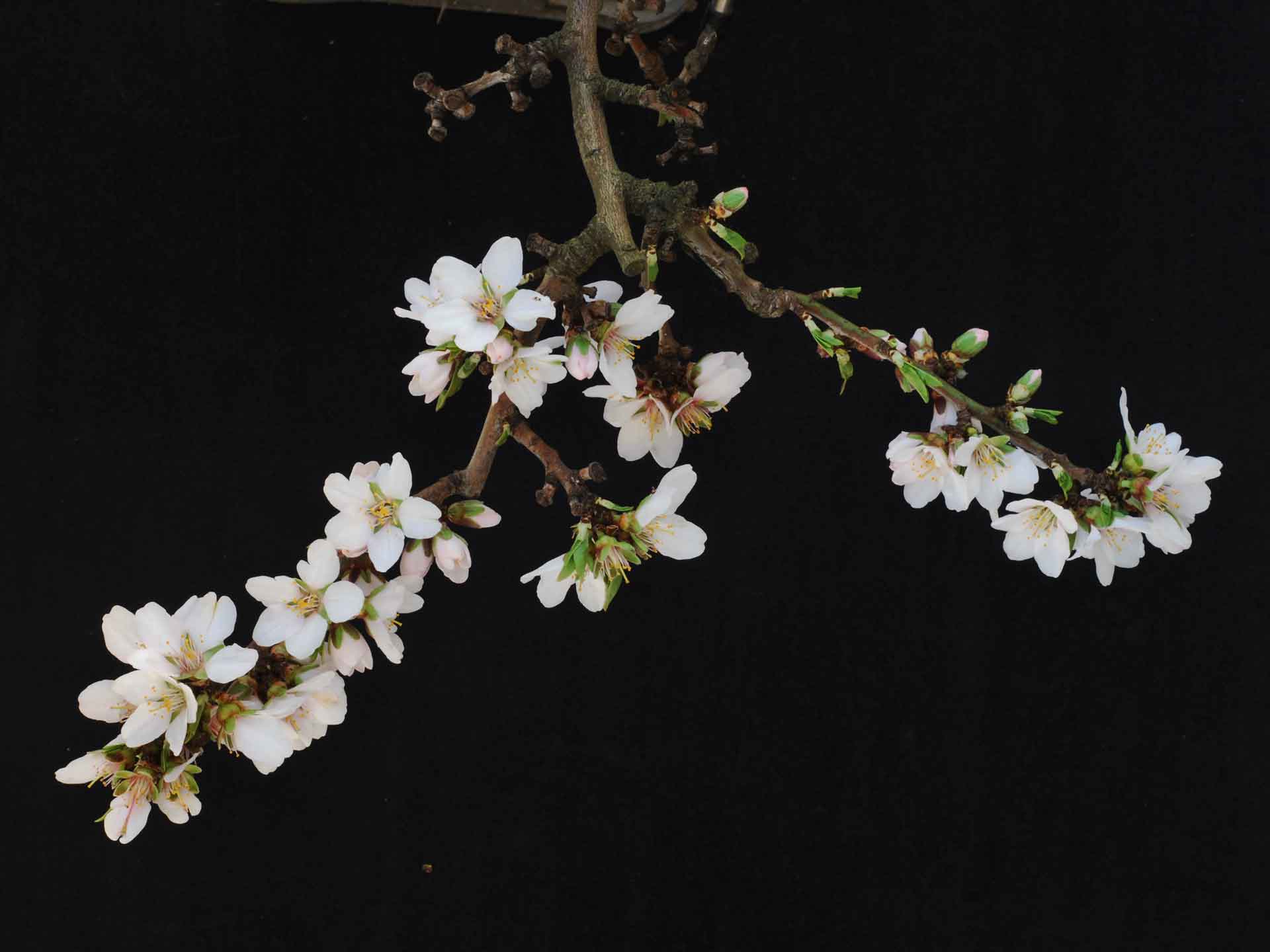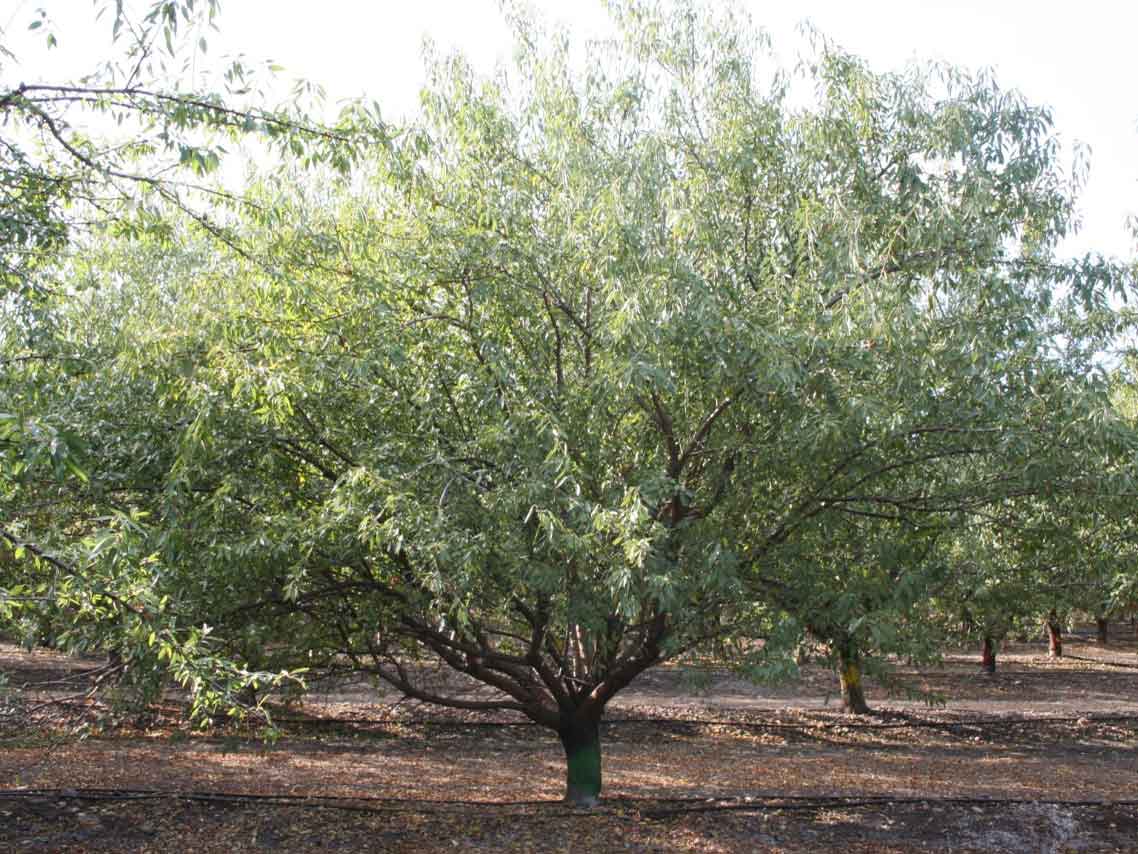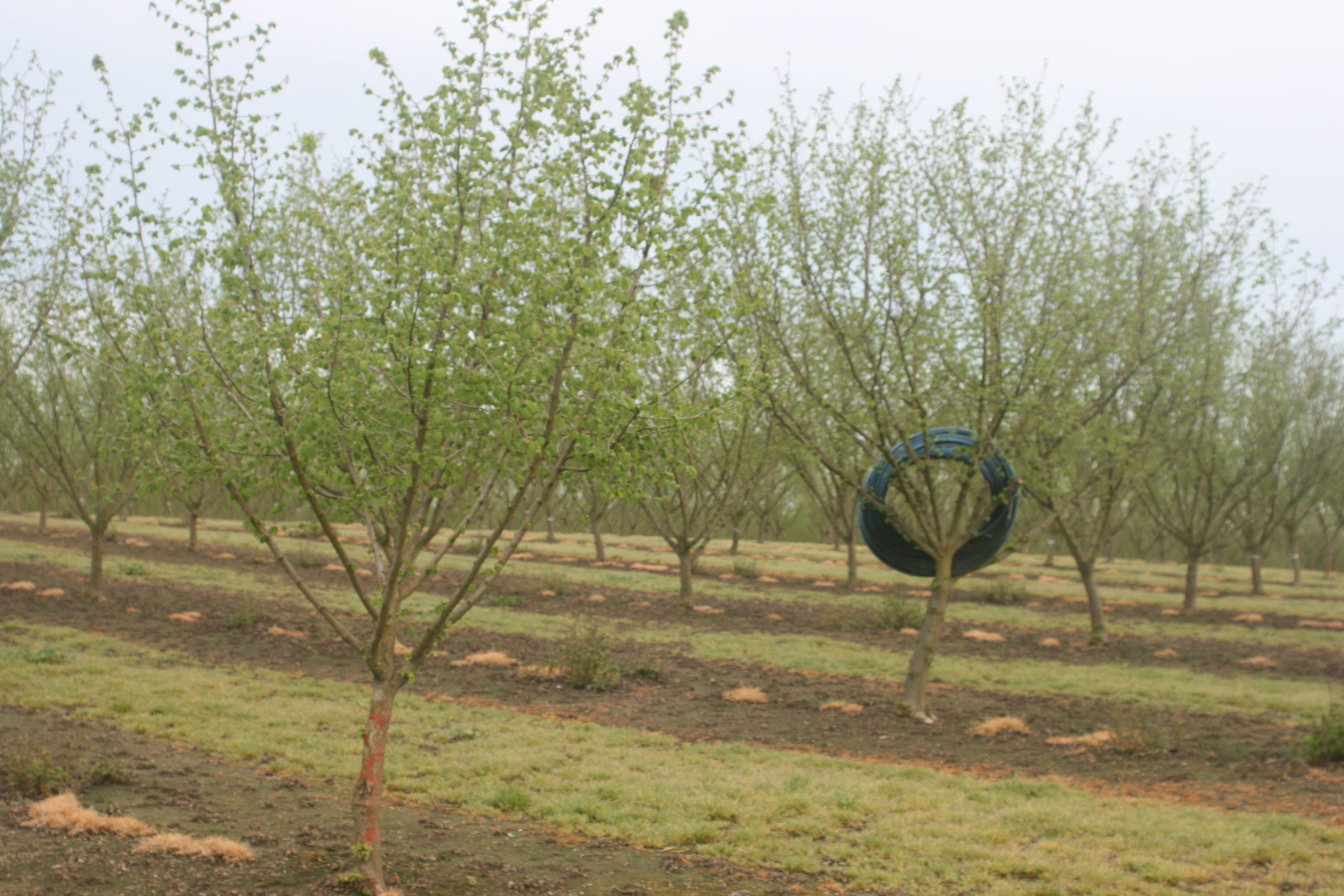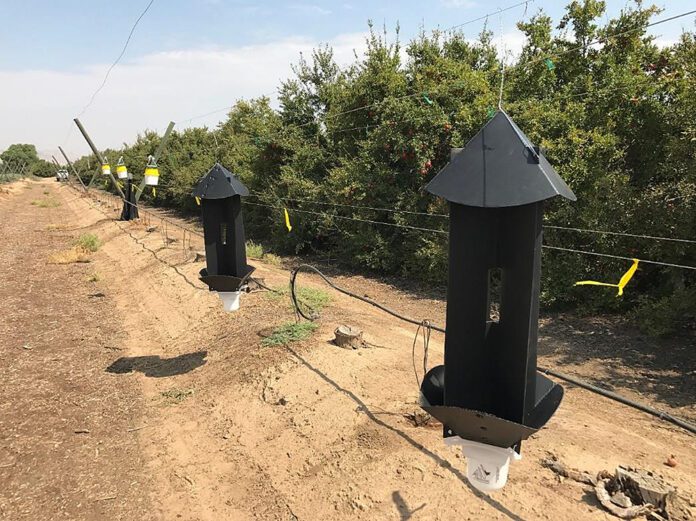
After a seven-year effort, University of California researchers have found what they believe is a viable trap and pheromone lure combination to monitor leaffooted bugs (LFB) in tree nuts and pomegranates.
Canby, Ore.-based Alpha Scents Inc. has commercialized the pheromone and markets its Lepzon lure along with a recommended yellow panel trap treated with Teflon coating. The lure is effective for both the western LFB found in California as well as the closely related western conifer LFB found in Oregon, said Alpha Scents President and CEO Darek Czokajlo.
Adair, Okla.-based Trécé Inc. plans to launch the new Pherocon LFB Canopy Stky dual-panel sticky trap and pheromone for LFB monitoring in March before the use period, said Thomas Martin, territory technical and field development manager for the West.
The company plans to market a kit that includes a dual-sided sticky card, a canopy that protects the card and a proprietary lure based on the one developed by UC, he said.
In addition, UC researchers currently are working with at least four other companies to test potential LFB lures, said Houston Wilson, associate Cooperative Extension specialist with the UC Riverside Department of Entomology. He is joined by Cooperative Extension Specialist Kent Daane with UC Berkeley.
The UC team continues to finetune lure and trap combinations and hopes to use them to develop economic treatment thresholds for the inch-long pest that migrates into tree nut orchards early in the season.
Until then, Wilson said the traps can serve as an early warning system for growers and PCAs, who can then treat in a timely manner if needed. Currently, growers and PCAs scout orchards for the elusive bugs, which tend to camouflage well. They also run to the other side of kernels or branches when disturbed, making scouting time and labor intensive.
PCAs frequently look for feeding signs, such as gumming on the hull. Extensive nut drop caused by LFB feeding early in the season before shell hardening also may signal an infestation, but both signs are usually too late to treat because the damage has already been done.
Brown Spot Rejects Increase
The research can’t come soon enough as the almond industry continues to grapple with increasing brown spot damage. In fact, Blue Diamond Growers found brown spot was the second-most-common cause of insect-related rejects in the 2024 crop, accounting for about one-third of the total. Only navel orangeworm damage exceeded it, according to information presented during an educational session at Blue Diamond’s November 2024 annual meeting.
For grading purposes, USDA and CDFA classify brown spot a reject whether sunken areas are present with or without brown discoloration and if it totals more than 1/8 inch on a kernel. If brown spots are present without a depression, they are still scored as brown spot.
The rejects are caused when plant bugs, including leaffooted plant bugs, green stink bugs and brown marmorated stink bugs, insert their stylet to feed on the kernel. In the process, they inject one or more enzymes with their saliva that liquefy the plant tissue. Then they suck up the liquid.
Early season feeding by LFB and brown marmorated stink bugs may result in kernel shriveling, abortion or nut drop. From mid-season on, feeding on the nuts by plant bugs may result in gummy kernels, kernels with brown spots or combinations.
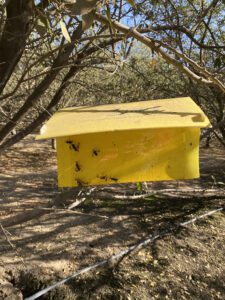
On the Scent
Of the three LFB species found in the Central Valley, Leptoglossus zonatus is the most common, comprising about 95% of the population. But all three behave similarly, Wilson said.
LFB adults overwinter in protected areas, such as under the bark of citrus, in nearby woods or in residential landscaping. As temperatures warm in March, they move into almond orchards shortly after bloom, eventually migrating into pistachios and finishing the fall in pomegranates.
Wilson said LFB also are found in several other crops, but researchers are still trying to determine their roles as alternative hosts.
The LFB pheromone is the result of multiyear research led by UC Riverside Entomology Professor Jocelyn Millar and funded by the Almond Board of California and the California Pistachio Research Board.
In the process, Millar and his group identified a new compounded totally unknown to science that was emitted by male L. zonatus and the closely related L. occidentalis. They gave it the common name “Leptotriene.” Laboratory testing of the chemical found strong antennae responses from both sexes.
Finding just the right chemical to attract LFB was hard enough, but Wilson said figuring out how to synthesize it further complicated the efforts. They published their results in open-source platforms so others could have access. The researchers will continue to look at potential blends of Leptotriene and other compounds.
“There’s more to come,” Wilson said. “We’ll keep working with these lures to try to better understand the concentration of the pheromone and how frequently you need to replace them in the trap.”
Along with lure development, researchers also conducted trials to determine the best color and trap style. They found a yellow hanging panel trap sprayed with a non-stick agent, such as Fluon, worked the best. Blue hanging panel traps came in second.
The non-stick agent prevents LFB, who are strong climbers, from landing on the trap body and then from escaping out of the collection cup at the trap bottom.
Together with the lure, the researchers then gauged the trap’s effectiveness in commercial Central Valley almond, pistachio and pomegranate orchards. The lure-trap combination was very effective. Their next step will be to try to develop economic thresholds.
“I think once we finally optimize these lures and traps, we would be doing something very specific to almonds and pistachios to understand through trapping how they relate to damage,” Wilson said.
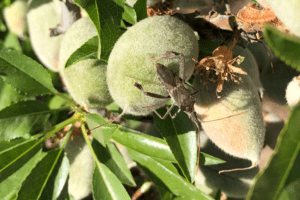
Alpha Scents
Alpha Scents’ lure and yellow hanging panel trap combination is still so new that Czokajlo didn’t know how many growers had put it out during the 2024 season. But in field trials, he said the lure and trap caught hundreds of western conifer seed bugs, known scientifically as L. occidentalis.
A relative of the western LFB, conifer LFB feed on and damage conelets and seeds from Douglas fir, true firs, cedars, pines, spruces and other cone-bearers. They’re of particular concern to conifer seed orchard and forestry managers because their feeding reduces the trees’ reproductive potential.
Czokajlo found the UC lure to be a strong seed bug attractant and said he may look into it as part of an attract-and-kill system. Used successfully in many insect management and eradication programs, attract and kill involves using an attractant mixed with a minute amount of pesticide. When the insect feeds on or contacts the pesticide, it dies.
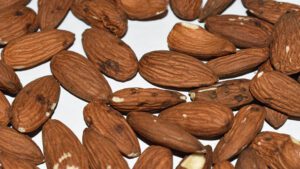
Trécé
Trécé successfully conducted intensive tree nut orchard trials with its Pherocon Canopy Stky design, trap and lure during the 2024 season, although Martin said company researchers plan to continue to optimize the attractant.
“We know it will work well and be an option for growers and PCAs,” he said.
The trap design, with a hanging vertical double-sided sticky card and lure “stuck” underneath, is similar to one the company markets for spotted wing drosophila but is yellow, which also attracts LFB.
Martin said they also had to beef up the card’s adhesive because LFB are strong and could break free of regular sticky cards.
A canopy on top helps protect the card from the elements. Depending on the temperature, he said the lure should last four to six weeks before it needed to be replaced.

Vicky Boyd | Contributing Writer
A veteran agricultural journalist, Vicky Boyd has covered the industry in California, Florida, Texas, Colorado, the South and the Mid-South. Along the way, she has won several writing awards. Boyd attended Colorado State University, where she earned a technical journalism degree with minors in agriculture and natural resources. Boyd is known for taking complex technical or scientific material and translating it so readers can use it on their farms. Her favorite topics are entomology, weeds and new technology. When she’s not out “playing in the dirt,” as she calls agricultural reporting, Boyd enjoys running, hiking, knitting and sewing.






